Put a plug in it: How to avoid falling victim to an indoor flood
- Approximately 1 in 4 Aussies have experienced water damage in their own homes – it impacts thousands of homes every year
- It can cause thousands of dollars in damage, displace families, and destroy sentimental items
- Understanding warning signs, taking preventative measures and home maintenance can help keep your home safe.
Water damage impacts thousands of Australian homes every year. Extreme incidents can cause thousands of dollars in damage, displace families, and destroy precious sentimental items.
And QBE research indicates they may be more common than many realise. According to the research, 3 in 5 Australians (58 percent) have direct experience with water damage in their homes, know someone who has or both*. And significantly, water damage incidents are one of the most common reasons to claim, accounting for almost a quarter (24%) of all QBE home insurance claims^.
The good news is many of these incidents can be avoided with simple mitigation measures, says Arron Mann, General Manager, Short Tail Claims at QBE.
"Our data and research indicate tens of thousands of Aussies have fallen victim to some form of water damage over the last eighteen months. Many people likely don't know that this damage - and the stress and cost that comes with it – is often avoidable."
And with many Australians at home and using plumbing more frequently, proactive steps may be even more critical, says Mann.
"Our research shows incidents can happen whether a householder is home or not – in fact being home more, as many of us are right now, can increase the pressure on our plumbing and risk to homes."
Here's what water damage is costing Aussies, where the risks lie and what households can do to avoid an indoor flood.
What is water damage costing Aussies?
Water damage can cause thousands of dollars’ worth of damage and cost families more than money, "a flooded loungeroom isn't a scenario anyone wants," explains Mann.
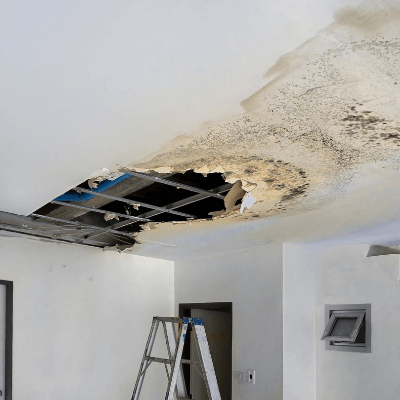 "The average water damage claim comes in at $5000, however more severe claims can reach over half a million dollars.
"The average water damage claim comes in at $5000, however more severe claims can reach over half a million dollars.
"Insurance can offer important financial protection and cover the cost of repairs for insured events, but even if you have cover, the emotional and psychological cost of an incident can be significant.
It's also important to remember insurance is there to help cover losses and damages from the unexpected, he adds.
"Wear and tear, such as a leaking pipe that becomes a more significant problem over time, may not be covered by your home insurance. So, maintaining your home – alongside insurance and other protection measures are investments worth considering."
Is being at home more increasing our risk?
Many might assume water damage occurs more frequently when no one is home, but the reality may surprise you, says Mann.
In fact, of the 26 per cent of respondents who say they have experienced water damage in their own home, 77 per cent said they were at home at the time of the incident.
This is a big factor to consider in today's climate and indicates Aussies might not know what to do when something goes wrong, says Mann.
"When we're at home more, we're using our plumbing more. The dishwasher is running, we're using sinks, the washing machine is on. There's more general wear and tear and pressure on our plumbing.
"Damage can also be sudden and severe regardless of whether you're home or not. Often the real difference between minimal and severe damage can be in how quickly a householder responds. But, likely, most householders don't know what to do when something goes awry."
Many Australians indeed aren't prepared. Despite 53 per cent of respondents saying their first response if water damage occurred would be turning off the water main, 1 in 5 Aussies (21%) don't know where it is in their home or unit, and worryingly, 1 in 5 Aussies (18%) don't know how to turn it off.
What's going wrong and where?
Pipe issues and leaks are the leading causes of water damage according to the data and research, but several other factors also contribute to the large volume of incidents and claims.
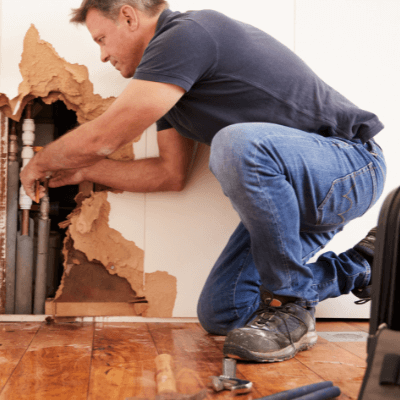 Burst or blocked pipes account for almost 50 per cent (45.5%) of water damage, while damage to flexi hoses (8.2%), damaged roofs (27.2 %) and old or worn-out plumbing (27.2%) are also behind incidents, according to Aussies who have had issues*.
Burst or blocked pipes account for almost 50 per cent (45.5%) of water damage, while damage to flexi hoses (8.2%), damaged roofs (27.2 %) and old or worn-out plumbing (27.2%) are also behind incidents, according to Aussies who have had issues*.
Additionally, according to respondents, overflowing baths, sinks and showers were responsible for 13.4 per cent of water damage incidents, while clogged drains accounted for a further 13.4 per cent*.
So, it's not surprising most incidents occur in the bathroom or kitchen, says Mann.
"In many homes, these rooms haven't been renovated for years, so their plumbing and water protection safeguards are compromised by age.
"Approximately 40 per cent of water damage claims come from bathrooms and 14 per cent from kitchens^. These are both rooms that you tend to leave alone unless you're undergoing a full renovation, but over time pipes can degrade and burst, and other wear and tear can occur too."
And the research indicates many Aussie bathrooms and kitchens could be at risk. More than 30 per cent of Australians haven’t renovated or updated their bathroom in over ten years, while 26 per cent don't know when it was last renovated or updated. And it's a similar story in the kitchen, with 35 per cent last renovating or updating ten or more years ago, and 26 per cent unaware when their kitchen last had major work done.
What can you do to protect your home?
The good news is, we can do a lot to protect our homes, says Mann.
"Aussies can protect their homes and significantly lower risk by taking precautions, understanding tell-tale water damage warning signs and conducting regular home maintenance."
Step 1: Take simple precautions
It sounds straightforward – but ensuring you've got the basics covered can go a long way in preventing water damage. "Little things can cause big problems. Simple precautions can save you complex and costly issues," says Mann.
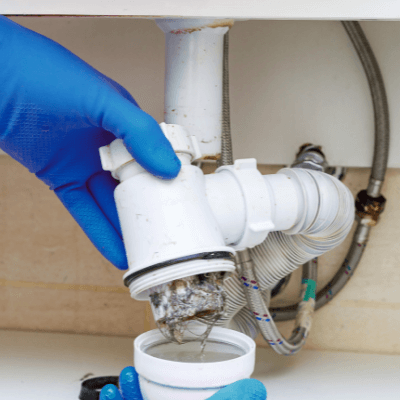 Make sure drains aren't obstructed
Make sure drains aren't obstructed
Make sure that things like bathmats or furniture don't obstruct drains. Obstructed drains can quickly turn a non-event into a major one.
Keep sinks draining
Pipes can easily get clogged up over time by food, grease, hair and other things that find their way down a plug hole. Running hot water after each use can help prevent issues. Consider fixing a strainer onto a plug hole to avoid anything that's not water from getting into the pipes.
Don't leave appliances running unattended
The thought of coming home or finishing work to clean dishes or washed clothes is always appealing, but if a leak springs from an appliance when you're not in there to respond, it can spell disaster.
Know where your water main is and how to turn it off
Turning off the water main can save you from a disaster, so familiarising yourself with it is vital. You can usually find the connection at the front boundary adjacent to the street if you're in a house. If you're in an apartment, check wet areas – the bathroom, laundry, or kitchen and look for a lone tap that should turn off the water to your apartment. And remember to turn the main off if you're going away.
Step 2: Look for signs
Wear and tear damage is part of life, and things naturally deteriorate over time, but it can also be a sign of water damage– and leave you more vulnerable to it.
The research indicates almost 30 per cent of Australians (28%) don't know what home maintenance tasks can prevent water damage, and 16 per cent didn't know home maintenance could prevent it. Meanwhile 21 per cent don't conduct any home maintenance because it's too expensive, while eight per cent say they just don't have time.
Spotting signs and risks early means you can take action before major problems arise can save time and money in the long term, explains Mann.
"While you may need a professional to come in and do specialist maintenance, there are plenty of things you can do yourself that could prevent something more serious happening."
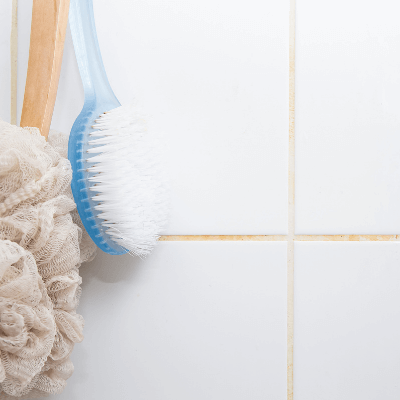 Check out the grout
Check out the grout
Grout is a key line of defence. Grout and sealant prevent water from getting into places it shouldn't. Even if a small portion is damaged or missing, it can open the floodgates. But tiles and grout can deteriorate with age, and over 30 per cent of Australians don't know when their bathroom tiles were last grouted, while 26 per cent said their bathroom was last grouted more than ten years ago. So, check tiles for worn or missing grouting, and look around wet areas for any signs of sealant damage.
Pay close attention to flexi hoses
Could you recognise a flexi hose in a line-up? If you answer no, you're not alone. Over half of Australians (55%) aren’t familiar with flexi hoses; almost 65 per cent (64.5%) have never checked them or can’t remember when they last checked them and 74 per cent have never replaced one or don’t know when they last had one replaced*. It's wise to get acquainted though. These little hoses – which typically connect your wall water outlet to sinks, dishwashers, toilets and washing machines – can burst and cause serious damage. Check every couple of months for moisture on the hose, expiry dates and any signs of protruding wires.
Look for other tell-tale signs
Warped walls can also point to a leaking pipe, as, more obviously, can damp patches on floors, walls and ceilings. Check your hot water units for any overflow – as this could signal the system is not working correctly. Look for any movement in paths and driveways, which could also indicate a leaking pipe.
Related article: This one simple tip could save your home from water damage
Step 3: Schedule a home health check
While a lot of maintenance can be simple, other tasks need an expert's touch. It's smart to get professionals at least once a year, recommends Mann. "They'll see things you simply can't."
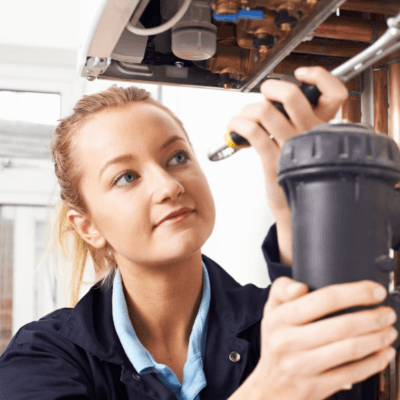 As the most common areas for damage, kitchens and bathrooms should be at the top of the list.
As the most common areas for damage, kitchens and bathrooms should be at the top of the list.
"The older the kitchen or bathroom, the more chance there is of something going wrong. Paying for a plumber to come round and check everything may seem an unnecessary cost but compared to the expense of a whole new bathroom or kitchen – the bill for an hour or two of a plumber's time is relatively insignificant."
"Scheduling an annual home plumbing health check is a smart investment." Here's what it should include, says Mann.
Water pressure
A plumber can check your water pressure – and if it is low, it could signal there's a leak somewhere in the property.
Plumbing, fittings, and appliances
Checking things including flexi hoses, pipes, plumbed appliances, cisterns and tap fittings is essential – minor repairs can save you significantly later.
Roof examination
By striking early, you can prevent severe damage later. It's also smart to get a handyperson or tradesperson up on your roof to check for any damage to the tiles or your tin roof. Some damage can be repaired on the spot.
If something goes wrong…
Sometimes, despite preparation efforts, an unforeseeable event can happen. According to Mann, a fast response and insurance coverage can make a world of difference in these scenarios.
"Insurance can provide financial protection against water damage and cover for temporary accommodation if a home is left unliveable after an event.
"It's a good idea for policyholders to check they have adequate home and contents cover and that their sum insured, is up to date.
Mann also recommends acting quickly in the event of a plumbing emergency.
"Make sure everyone is safe, turn off the water at the mains to prevent any further damage and contact a plumber and your insurance company as soon as possible."
Find out more about QBE Home and Contents Insurance
| 7 tips for minimising the possibility of water damage at home |
|
* Polling study of 1,011 Australians, aged 18-65, completed for QBE Insurance Australia in June 2021
^ Analysis of QBE claims data 2018 – 2021









